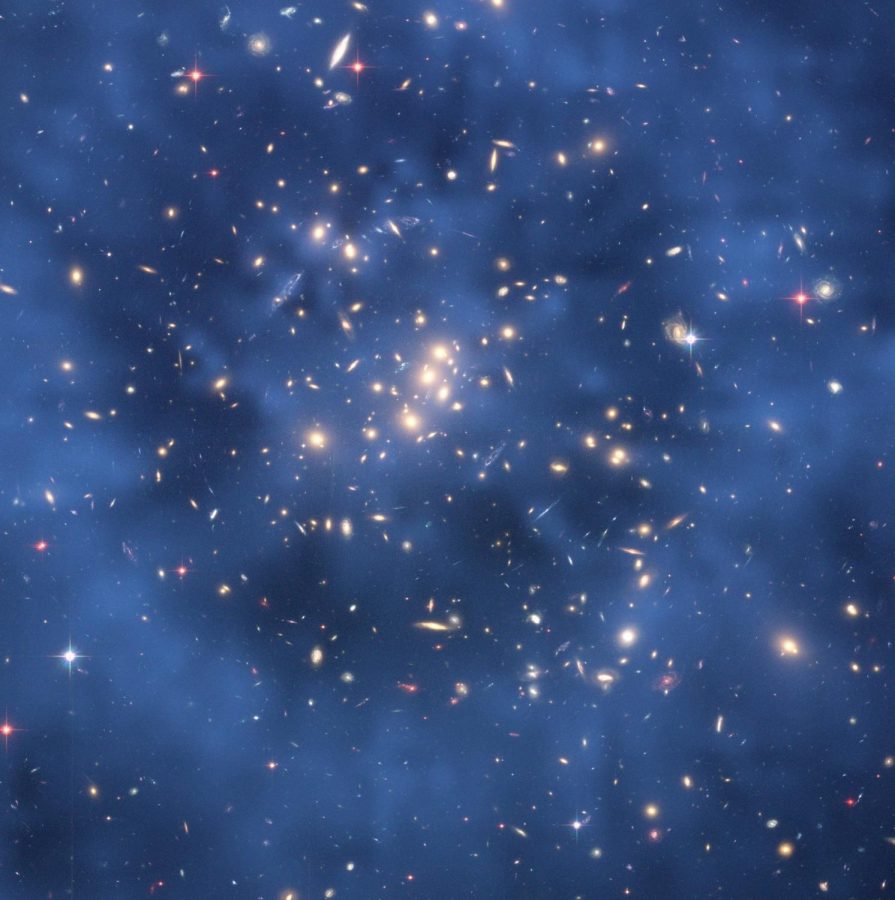Hubble Data shows new findings in dark matter composition
September 15, 2020
Dark matter is the material that keeps the stars, planets, galaxies, dust, and gas altogether in space. Since it doesn’t emit, absorb, or reflect any light, its presence is only indicated by the gravitational pull on the matter visible in space. To study their nature and overall function, astronomists look at galaxy clusters: the most massive and recently assembled structures in the universe. They function as large reservoirs for dark matter.
These clusters have unveiled unexpected results in current research. A discrepancy was found between observations of the dark matter concentrations in these clusters and the theoretical computer simulations of how it should be distributed within the clusters. These new findings indicate that some small-scale concentrations of dark matter produce lensing effects that are ten times stronger than expected.
The data was found by NASA through Hubble’s crystal-clear images, taken by the telescope’s Wide Field Camera 3 and Advanced Camera for Surveys. This camera was paired with spectra from the European Southern Observatory’s Very Large Telescope (VLT), producing an accurate dark-matter map. By measuring the lensing distortions, astronomers could trace out the amount and distribution of dark matter.
“We were able to associate the galaxies with each cluster and estimate their distances”, states team member Piero Rosati of the Università Degli Studi di Ferrara in Italy, who led the spectroscopic campaign.
Dozens of background galaxies were identified and calculated by mass with the coupling of the Hubble imaging and the VLT spectra. This allowed for a high-defined map to form, consisting of the mass distributions of dark matter in each cluster.
Astronomers look forward to progressing in their dark matter research and its mysteries to finally define their nature in our Universe.










